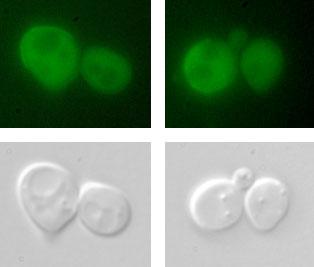PROVIDENCE, R.I. [Brown University] — Cells are not static. They can transform themselves over time — but change can have dangerous implications. Benign cells, for example, can suddenly change into cancerous ones.
That’s one reason why scientists are trying to figure out why and how cells can shed their old identity and take on a new one. If they can figure out how this happens, researchers may better understand why many different cells — such as stem cells or cells that become cancerous — transform. That, in turn, could someday allow scientists to control the transformative process in a way that might help treat a wide range of diseases.
Jeffrey Laney, assistant professor of biology at Brown University, has identified one way this change takes place by looking at Saccharomyces cerevisae, a common yeast used to make beer and bread. Laney found that a cellular “machine” removes a regulatory “lid” from genes in the cell, so the cell can change its state. Details are published online in Nature Cell Biology, with a print version to come.
“We have known that cells shed their old identity. What we didn’t know is how that mechanism occurred,” said Laney, the paper’s lead author and a resaearcher in the Department of Molecular Biology, Cell Biology and Biochemistry.
The finding could shed new light on many different biological transitions, Laney said, where cells change or evolve as part of their normal functioning.
To conduct the study, Laney and his lab tracked the cellular change that takes place in baker’s yeast. Specifically, they looked at the organism as its “a” cells switched to “alpha” cells in order to self-fertilize. (The process would be analogous to an egg becoming a sperm).
Laney’s team found that a regulatory protein “sits” on genes inside the cell, capping those genes — turning them off — and managing the cell’s identify as a result. Another regulatory molecule can pull that protein off the genes, allowing the genes to be switched on and to transform the cell from the “a” type into the “alpha” type.
Although the genes Laney’s lab studied do not exist in humans, the idea of cellular change by changing a gene expression state from on to off, or off to on, is considered universal in all cells.
Understanding how this process happens normally will allow scientists to gain insight into pathological situations when the cell transformation process goes wrong, Laney said.
Alexander Wilcox, a postdoctoral research associate, is a co-author of the paper.
Laney received funding for the study from the National Institutes of Health and from a March of Dimes Basil O’Connor Starter Scholar Research Award.

